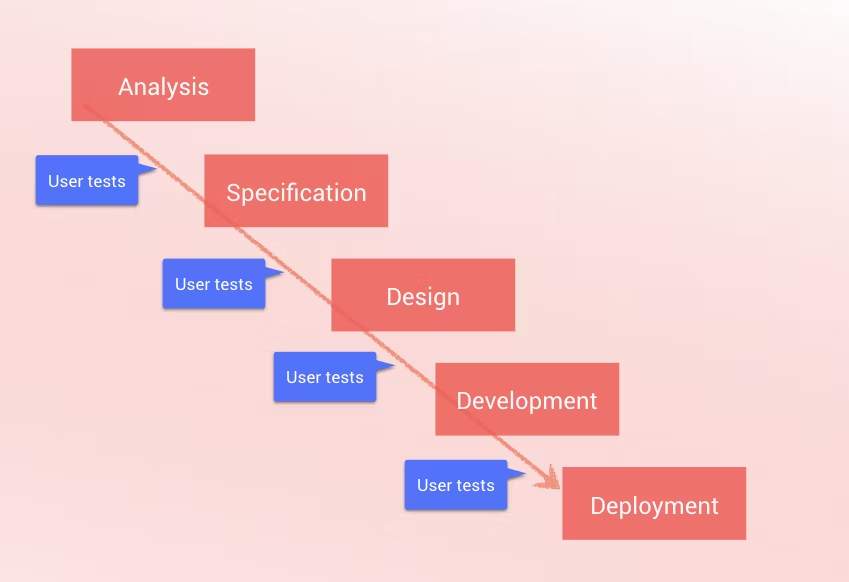
User testing is a crucial phase in the website design and development process. It helps identify usability issues, gather feedback, and ensure that your website meets the needs of its users. Conducting effective user testing can lead to better user experiences, higher satisfaction rates, and ultimately, improved conversions. Here’s a comprehensive guide on how to conduct user testing for your website.
1. Define Your Goals
Identify Objectives
Before conducting user testing, clearly define what you want to achieve. Are you looking to evaluate overall usability, test a specific feature, or gather feedback on design elements? Setting specific goals will help guide your testing process.
Examples of Goals
- Assess navigation intuitiveness.
- Evaluate the effectiveness of a call-to-action.
- Understand how users interact with a new feature.
2. Choose the Right Method
Common User Testing Methods
There are several methods to choose from, each suited to different testing objectives:
- Moderated Testing: A facilitator guides users through tasks, allowing for real-time feedback and questions.
- Unmoderated Testing: Users complete tasks on their own, often recorded for later analysis.
- A/B Testing: Compare two versions of a webpage to see which performs better.
- Remote Testing: Conduct tests online, allowing for broader participant demographics.
Selecting the Method
Choose the method based on your goals, resources, and timeline. Moderated testing offers in-depth insights, while unmoderated testing can be quicker and less expensive.
3. Recruit Participants
Identify Your Target Audience
Select participants that represent your target user base. This could include current users, potential customers, or individuals who fit your demographic profile.
Recruitment Strategies
- Use social media and email newsletters.
- Reach out to existing customers.
- Consider using platforms like UserTesting or Lookback to find participants.
4. Create Testing Scenarios
Develop Realistic Tasks
Create specific tasks that align with your testing goals. These should mimic actual user scenarios and include clear instructions.
Examples of Tasks
- “Find and purchase a product.”
- “Sign up for our newsletter.”
- “Locate the contact information.”
Prioritize Tasks
Focus on the most critical tasks first, as these will provide the most valuable insights.
5. Prepare the Testing Environment
Set Up Your Tools
Ensure you have the necessary tools and software for conducting your tests. This may include screen recording software, video conferencing tools for moderated tests, or survey platforms for collecting feedback.
Create a Comfortable Environment
If conducting in-person testing, choose a quiet location free from distractions. For remote testing, ensure participants have clear instructions and access to the necessary technology.
6. Conduct the Testing
Facilitate the Session
If moderating, guide participants through the tasks while encouraging them to think aloud. This can provide valuable insights into their thought processes and any challenges they encounter.
Observe Behavior
Take notes on user interactions, challenges faced, and any comments they make. Pay attention to body language and facial expressions, as these can provide additional context.
7. Collect Feedback
Use Surveys and Questionnaires
After the testing session, gather structured feedback through surveys or questionnaires. Ask about user satisfaction, ease of use, and specific suggestions for improvement.
Conduct Debriefing Sessions
If possible, hold a brief discussion after testing to delve deeper into user thoughts and feelings about their experience.
8. Analyze the Data
Identify Patterns
Review your notes, recordings, and feedback to identify common issues or trends. Look for patterns in user behavior and responses that may indicate broader usability problems.
Prioritize Findings
Not all feedback is equal. Prioritize issues based on their frequency and impact on user experience. Focus on fixing the most critical problems first.
9. Implement Changes
Develop Actionable Solutions
Based on your findings, create a list of actionable changes to improve your website. This may involve design revisions, content updates, or navigation adjustments.
Collaborate with Your Team
Engage your design and development teams in discussions about the feedback and suggested improvements to ensure everyone is on the same page.
10. Iterate and Test Again
Continuous Improvement
User testing should not be a one-time event. Implement changes and conduct further rounds of testing to validate improvements and identify any new issues.
Establish a Regular Testing Schedule
Consider integrating user testing into your regular design and development cycles. Regular feedback can help you keep your website aligned with user needs over time.
Conducting user testing is an invaluable step in the website design and development process. By prioritizing user feedback and iterating on your designs, you can create a website that not only meets user expectations but exceeds them. Remember, the goal is to create an intuitive, engaging experience that keeps users coming back. By following these steps, you’ll be well on your way to effective user testing that drives your website’s success. Contact Smart Choice Ug for your website





